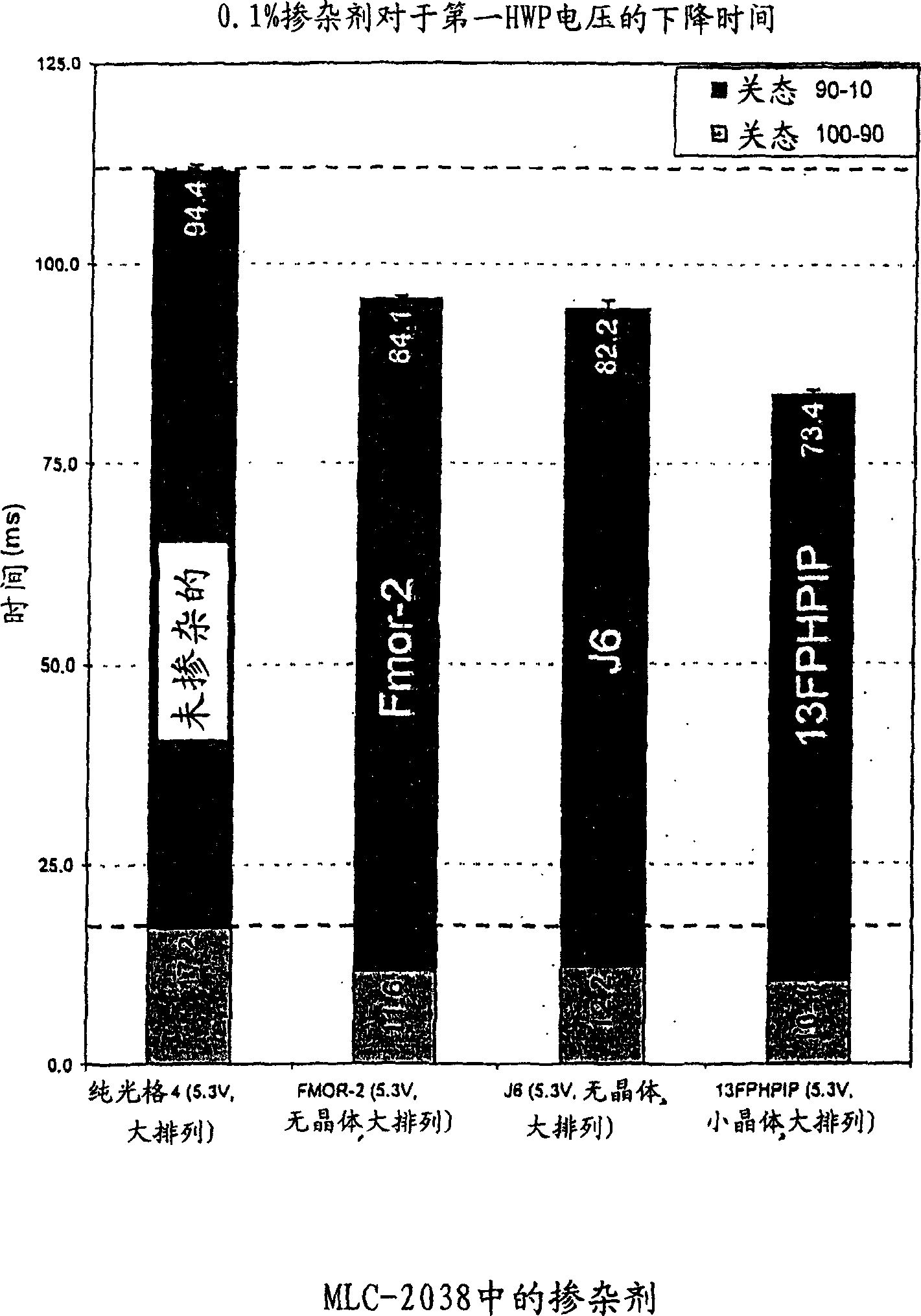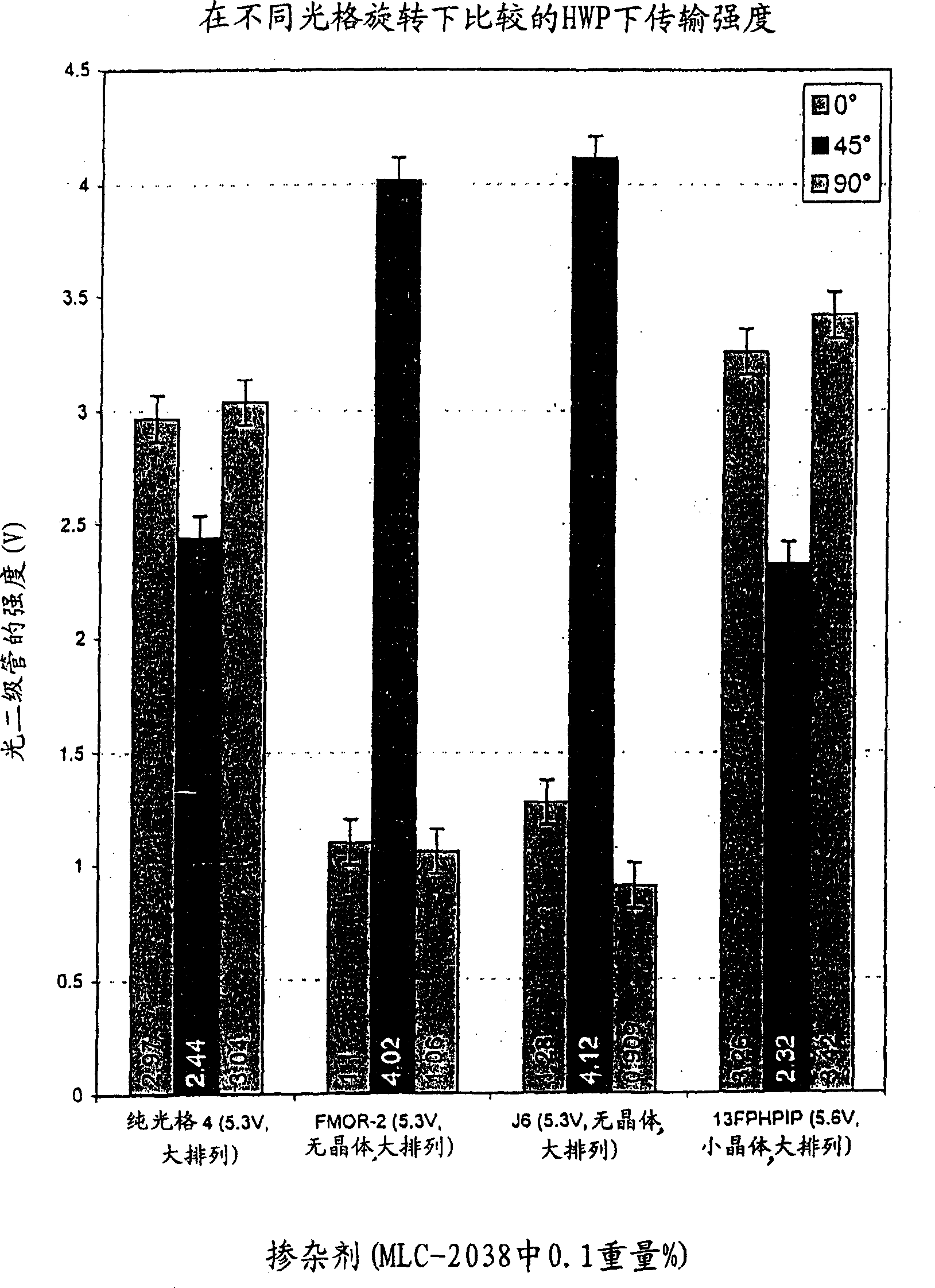Method for improving nagative liquid crystal response
A negative type, liquid crystal material technology, applied in liquid crystal materials, chemical instruments and methods, thin material processing, etc., can solve problems such as unfavorable verticality of segmentation
- Summary
- Abstract
- Description
- Claims
- Application Information
AI Technical Summary
Problems solved by technology
Method used
Image
Examples
Embodiment
[0094] The experimental results in the figure are obtained as follows:
[0095] The MLC-2038 and 0.1 wt% mixture were mixed (with a magnetic stirrer) on a hot plate at 100°C overnight for 10 hours. The mixture was centrifuged at 5000 rpm for 7 minutes. This mixture was then used to fill a 5 μm EHC grid by capillary action on a hot plate at 100°C. Then, the filled lattice was tempered on a hot plate at 100° C. for 10 hours, and then gradually cooled.
[0096] The response profile was detected by placing the graticule on an optical microscope with crossed polarizers, then applying a 250 Hz square wave AC drive, and detecting the transmittance with a photodiode. The response times used to compare the improvement effects are those of the first HWP voltage. This gives a field strength of about 1 Vpp / μm (0.5 Vpg / μm). When the LC is doped, the field strength varies by ±0.1 Vpp / μm for all dopants. For pure MLC-2038 in a 5 μm EHC negative cell, the first HWP voltage is 5.3 Vpp. F...
PUM
| Property | Measurement | Unit |
|---|---|---|
| electrical resistance | aaaaa | aaaaa |
Abstract
Description
Claims
Application Information
 Login to View More
Login to View More - R&D
- Intellectual Property
- Life Sciences
- Materials
- Tech Scout
- Unparalleled Data Quality
- Higher Quality Content
- 60% Fewer Hallucinations
Browse by: Latest US Patents, China's latest patents, Technical Efficacy Thesaurus, Application Domain, Technology Topic, Popular Technical Reports.
© 2025 PatSnap. All rights reserved.Legal|Privacy policy|Modern Slavery Act Transparency Statement|Sitemap|About US| Contact US: help@patsnap.com



